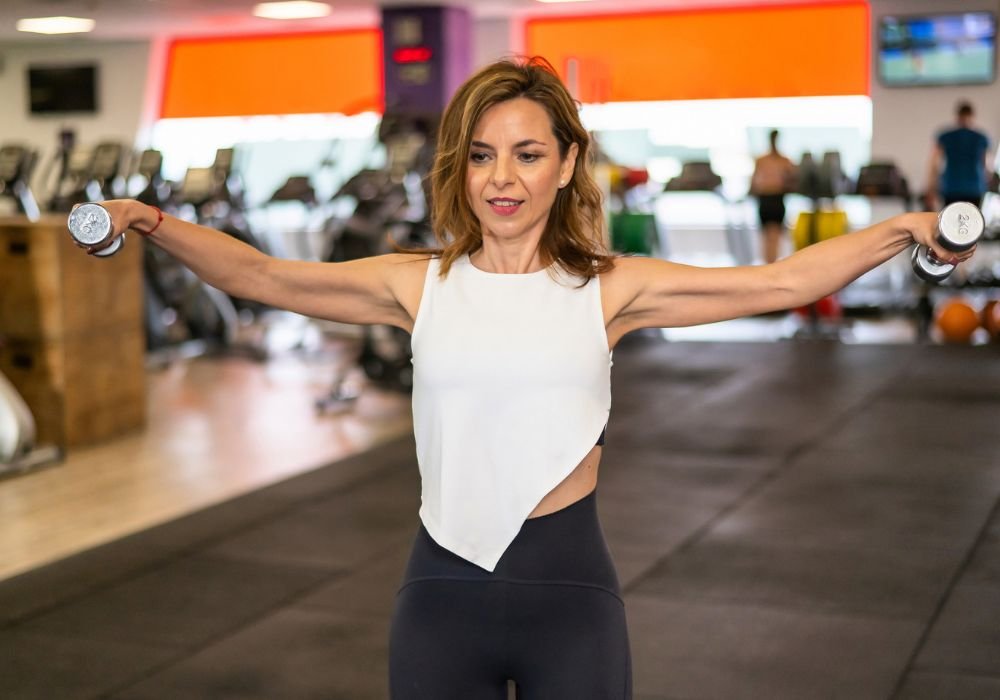This text was written by a TecMundo columnist; Learn more at the end.
Researchers have named the minimum dose of weight training for beginners to increase muscle strength and endurance as follows: minimalist exercise. We know that even a small amount is better than nothing for many physical activity outcomes.
This may be a valid approach for those who have little time to spare for exercise or even those who do not have enough motivation. With this concern in mind, researchers scoured the literature to find evidence on minimum dosage for muscle strength and endurance.
What did they find?
Only one exercise per week consisting of functional multi-joint pulling and pushing exercises with at least one set of 6 to 15 repetitions with 30 to 80% of the maximum weight, enough to make gains in physical fitness, new study finds.
The series does not necessarily need to be performed to the point of muscle failure, that is, to the point where completing another repetition is no longer possible. These improvements may last for the first 2 to 3 months, as there is little research investigating this minimal training strategy for longer than 3 months.
Although science has often proven that higher volumes, i.e. more sets per week, can be interesting in terms of muscle gains, that’s not what the latest study was looking at, but rather the lowest dose that could still provide benefits. And the dose is really small.
An exercise as suggested may last for a short period of time, perhaps 20 to 30 minutes. Exercises such as squats, bench press, deadlift, leg press, pull-ups and rows, lunges and elbow flexions serve the purpose of moving the whole body in a short time. It does not matter whether it is done with free weights or machines, but the fact that the latter is ready to apply can be an advantage in relation to the time spent.
Multi-joint exercises allow the use of more muscle mass and shorter training sessions, but require slightly longer rest intervals for recovery. It is also possible to move heavy loads in these exercises, which can create the perception of competence, which is an important motivator to continue lifting weights.
It is also recommended that you perform the concentric phase of the movement as quickly as possible to build strength, such as performing the squat raise or the push phase of the bench press faster.
It is not known whether these recommendations exist. Implementing minimalist training will still be effective after 8 to 12 weeks of training.. If a plateau is achieved, increasingly higher training frequencies, volumes and intensities may be required over time.

Approach productive time
Recently, researchers from Norway and the United States published a study synthesizing evidence on how strength training can be a good use of time. This is an approach called . productive timei.e. time efficiency.
The recommendation is similar to the most recent study; prioritizing bilateral movements (in exercises with both arms or both legs working simultaneously) and multi-joint movements through full range of motion with at least 4 weekly sets per muscle group using a load band 6 to 15 repetitions when the goal is strength and muscle hypertrophy.
Additionally, advanced training methods such as supersets, dropsets, and rest-pauses can be beneficial in reducing training time by almost half compared to traditional training, while maintaining training volume.
Skipping the more general warm-up (which we do on the treadmill before weight training) can also save time without compromising performance. Warming up specifically for the muscle to be worked remains necessary, but stretching is not necessary unless there are flexibility goals.
Minimalist education emerges when lack of time is an obstacle frequently expressed by people for years.
Strategies that use minimal dosage may be a gateway to many physically inactive individuals who have previously tried to train at the gym but were unable to continue, providing solid benefits and avoiding some of the negative effects such as late-onset extreme muscle soreness.
In terms of health, scientific evidence has widely proven that any body movement provides benefits, especially if it is done through physical exercise. When it comes to goals beyond health, such as physical conditioning, weight loss or muscle hypertrophy, a larger amount is recommended in addition to specific strategies.
Minimalism is only about what is necessary. At least it can be done with benefits. Basics done well will work, but we need to do this all the time. Consistency is more important than intensity. Minimalist or not, it’s a good education!
***
Fábio Dominski He holds a PhD in Human Movement Sciences and a degree in Physical Education from Santa Catarina State University (UDESC). He is a university professor and researcher at the Laboratory of Sport and Exercise Psychology (LAPE/UDESC). he is doing scientific dissemination on social media and at pPodcast available on Spotify. Author of Physical Exercise and Science – Facts and Myths.
Source: Tec Mundo
I’m Blaine Morgan, an experienced journalist and writer with over 8 years of experience in the tech industry. My expertise lies in writing about technology news and trends, covering everything from cutting-edge gadgets to emerging software developments. I’ve written for several leading publications including Gadget Onus where I am an author.













